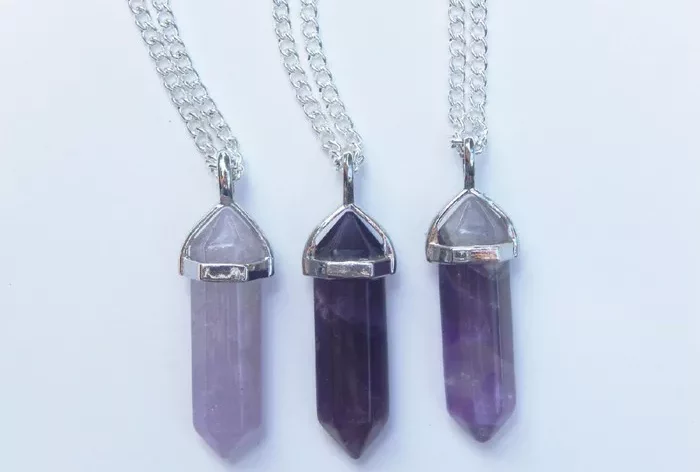Jewelry appraisal is a precise and intricate field that requires a deep understanding of gemstones, their characteristics, and the factors that determine their quality. Among the various gemstones, amethyst holds a special place due to its unique color, mystical aura, and widespread use in jewelry making. In this article, we will explore what constitutes the best quality amethyst from a professional jewelry appraiser’s perspective. We will delve into the details of color, clarity, cut, carat weight, and other relevant factors to help you understand and appreciate this beautiful gemstone.
Understanding Amethyst
Amethyst is a variety of quartz that displays a vibrant purple color, ranging from light lavender to deep, rich purple hues. This color is caused by trace amounts of iron and aluminum impurities within the quartz crystal structure. Historically, amethyst has been associated with royalty, mysticism, and spirituality. In ancient times, it was believed to possess protective qualities and to ward off evil spirits. Today, amethyst jewelry is popular for its elegance and the versatility it offers in different jewelry designs.
Color: The Key Factor
Color is the most crucial factor in determining the quality of amethyst. The best quality amethyst displays a deep, vivid purple color with a slight hint of red undertones. This color is often described as “royal purple” or “deep wine.” The saturation and uniformity of the color are also important. High-quality amethyst should have a consistent color throughout the gemstone, with no noticeable color zoning or fading.
Lighter shades of purple, such as lavender or lilac, are also found in amethyst, but they are generally considered less valuable than the deeper hues. However, some people prefer the softer, more delicate look of lighter-colored amethyst, making it a matter of personal preference.
Clarity: The Purity of the Gemstone
Clarity refers to the internal characteristics of the gemstone, such as inclusions, cracks, or other imperfections. High-quality amethyst should be relatively clear, with minimal internal flaws. While some natural inclusions are inevitable in most gemstones, the fewer and less obtrusive they are, the higher the quality of the amethyst.
Inclusions can take various forms, such as tiny crystals, liquid-filled cavities, or cracks. While some inclusions can add character and uniqueness to a gemstone, they can also detract from its overall appearance and value. When assessing clarity, a jewelry appraiser will look for gemstones with minimal and well-distributed inclusions.
Cut: Bringing Out the Best in Color and Clarity
The cut of a gemstone refers to the way it has been shaped and polished to enhance its beauty and bring out the best in its color and clarity. High-quality amethyst should be cut to precise proportions that maximize its brilliance and fire.
A well-cut amethyst will have smooth, polished surfaces with no visible scratches or abrasions. The gemstone should also be cut to showcase its color and clarity to the fullest. This may involve faceting the gemstone in a way that maximizes light reflection and enhances its visual appeal.
Different cutting styles can also affect the perceived quality of amethyst. For example, a step-cut amethyst may have a more dramatic, geometric look, while a round or oval-cut amethyst may appear more classic and elegant. The choice of cut depends on the desired appearance and use of the gemstone in jewelry.
Carat Weight: Size Matters
Carat weight is another important factor in determining the quality and value of amethyst. Generally, larger gemstones are more rare and valuable than smaller ones. However, size is not the only consideration; the quality of the gemstone must also be taken into account.
A large amethyst with poor color, clarity, or cut will not be as valuable as a smaller, but higher-quality gemstone. Therefore, when assessing amethyst, it is important to consider both size and quality.
Origin: The Influence of Geography
The origin of amethyst can also affect its quality and value. Some mines produce gemstones with consistently superior qualities, while others may yield more variable results. Understanding the origin of the amethyst can provide insight into its potential quality and rarity.
For example, amethyst from the Siberian mines in Russia is known for its deep, rich purple color and high clarity. Brazilian amethyst, on the other hand, may display a wider range of colors and clarities. By knowing the origin of the amethyst, a jewelry appraiser can make more informed assessments of its quality and value.
Treatment and Enhancement
Some amethyst gemstones may undergo treatment or enhancement processes to improve their appearance. These treatments can include heating, irradiation, or dyeing. While some treatments are considered acceptable and do not necessarily detract from the value of the gemstone, others may be considered misleading or deceptive.
When assessing amethyst, it is important to determine whether it has been treated and, if so, what type of treatment was used. This information can affect the value and appeal of the gemstone to potential buyers.
Market Trends and Consumer Preferences
Finally, the quality of amethyst can also be influenced by market trends and consumer preferences. As fashion and jewelry styles change, the demand for different types of amethyst may fluctuate. For example, during certain periods, lighter-colored amethyst may be more popular, while during others, deeper hues may be in demand.
Understanding these market trends can help jewelry appraisers and sellers make informed decisions about the quality and pricing of amethyst gemstones. By staying attuned to consumer preferences and market dynamics, they can better meet the needs and expectations of their customers.
Conclusion
In conclusion, the best quality amethyst is characterized by its deep, vivid purple color, high clarity, well-cut proportions, and desirable carat weight. Origin, treatment, and market trends also play important roles in determining the quality and value of amethyst gemstones. As a jewelry appraiser, it is essential to have a deep understanding of these factors to accurately assess the quality and value of amethyst jewelry.
Related topic:
- What Determines the Value of an Amethyst?
- How Can You Tell if Amethyst Is Natural or Synthetic?
- Lighter Amethyst Vs Darker Amethyst :Which Is More Valuable?


